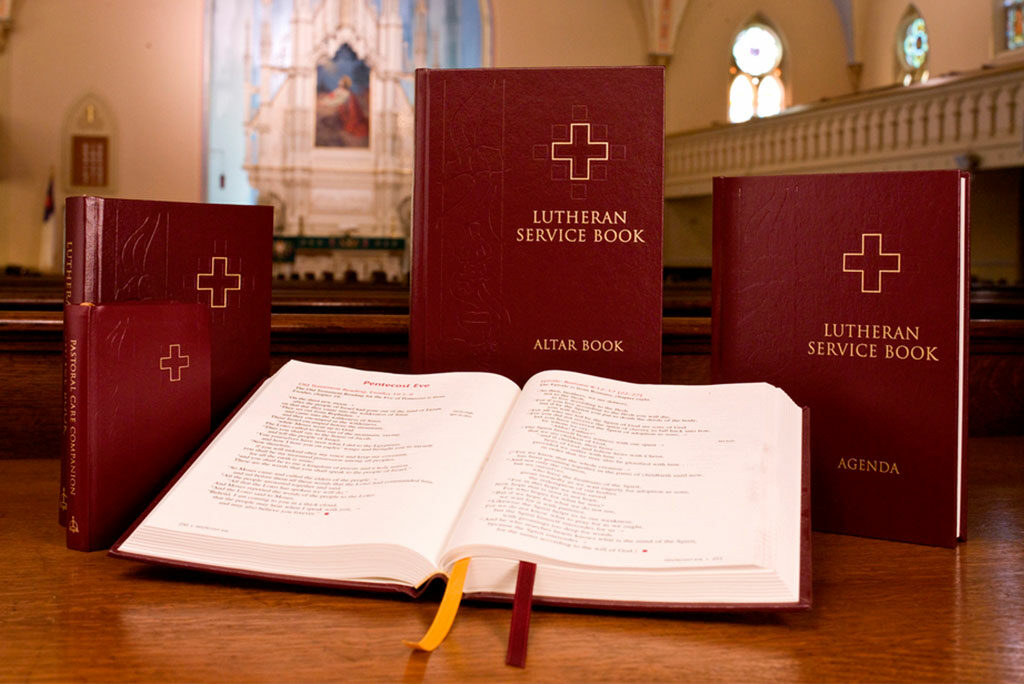When Lutheran Service Book (LSB) was published in 2006, it was designed to be a unifying hymnal for the synod. Specifically, they wanted to get the vast majority of congregations behind a single book. At the time, I'm guessing the synod was primarily split between three worship resources: The Lutheran Hymnal, Lutheran Worship, and contemporary music. While the synod will probably never (again?) all worship from the same book and in the same way, they wanted to give it their best shot to appease both the TLH and LW folks, while also giving a nod to the contemporary congregations, all without sacrificing faithfulness and quality.
I came into the history of Lutheran hymnody pretty late in the game, since I was only born 9 years before LSB came out. My congregation growing up used TLH, but my father gave every member of our family an LSB, seeing the potential benefits in getting us used to the hymnal that most of the synod would be using, as well as the benefit of trying to use the same (new) Bible translation across the board - ESV.
Lutheran Service Book has become my favorite Lutheran hymnal, chiefly because it's the one I grew up with, and the one I continue to use. I don't necessarily think it's the best; one of the old books from the '20s or even Walther's Hymnal probably have it beat. But if the goal was to unify the synod without becoming unfaithful, I think the writers and editors of LSB did a fine job. The hymnal retains a great many treasures of Lutheran hymnody. It employs a genius numbering system to prevent confusion across sections. Its wide array of resources is eminently useful. Its liturgies are faithful and mostly beautiful. The pocket edition especially, which I've written about before, is just golden; I believe the first hymnal in our synod's history to contain all 150 Psalms.
At the same time, Lutheran Service Book has a number of weaknesses, mostly borne from their desire to create a unifying hymnal - trying to do a lot of things well often ends up meaning some depth and quality is lost. Specifically, here are the hymnal's weaknesses as I see them:
- Not having all 150 Psalms in the standard hymnal
- Too many orders of worship and divine service (the Lutheran Service Builder has made a lot of that simply unnecessary - a technological advancement that would not have been foreseen at the time)
- Too many third-tier hymns
- The amputation (shortening or eliminating) of too many first-tier hymns
- The lack of inclusion of other confessional documents
- Remove the Gloria Patri from the end of each Psalm. This is a space-saver. While the Trinitarian focus is commendable, it sometimes weakens and undermines that divinely-chosen ending of each Psalm.
- Remove Divine Service 2, 4, and 5.
- Remove either Responsive Prayer I or II
- Remove the service of Corporate Confession and Absolution
- Condense the "Prayers, Intercessions, and Thanksgiving" section, with only about half the prayers, but make them better quality drawing from one of the older versions of the Lutheran Book of prayer. make each prayer a bigger deal instead of just throwing a bunch in there.
- Remove 10-20 third-tier hymns, and any and all fourth-tier hymns
- Remove a few of the repetitive "liturgical music" hymns such as various ways to sing "Alleluia"
- Add the missing Psalms to include all 150
- Add another couple Psalm prayer plans in addition to the table for daily prayer; one for praying through them every 28 days.
- Keep Divine Service 1 and 3 and still call them those, then make a setting 2 that combines the best elements from 2, 4, and 5. Three is still plenty of options, but with the Service Builder out there, again, you don't need to try to tailor it to every person.
- Include a prayer for each day of the week in the Daily Prayer section, instead of just suggestions for topics.
- Add all the original stanzas to several 16th and 17th century hymns, with priority given to the best of Gerhardt and Heerman. Present the hymn with batches of verses split into and labeled with roman numerals, to encourage congregations to sing the whole thing split throughout their service. For instance, a 15-stanza hymn would be divided into I (1-5) II (6-10) and III (11-15).
- Add a handful of new hymns, with priority given to those which are of the highest quality and are most needful for the modern Lutheran at the time.
- Add the Unaltered Augsburg Confession



No comments:
Post a Comment